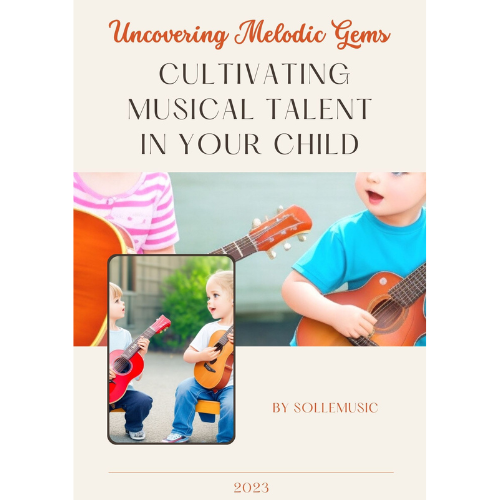In the 1920s, country music was one of the first modern popular music to come out of the South. It has elements of folk music from the Appalachians, blues, gospel, and traditional Celtic music.
Country music is known for its simple structure and harmony. It usually consists of ballads and dance songs that make you want to move your feet. Most of the time, banjos, electric and acoustic guitars, dobros, fiddles, harmonicas, drums, and other instruments are used to play this type of music.
There are many different types of country music, and it would be hard to list them all in one place. But over the years, country music has mostly been put into different groups. So let's take a closer look at some of the most popular types of country music:
1. Bluegrass
Bluegrass comes from Appalachian folk music, and it has become very popular. But jazz and improvised parts set it apart from the traditional Appalachian folk music. For example, artists don't play songs from beginning to end; instead, they play the same chords repeatedly while making their music.
Bluegrass is still popular worldwide, and it's easy to see why: Telluride Bluegrass Festival and RockyGrass are well-known events. Bluegrass musicians also play at Red Rocks and The Gorge, two of the world's biggest and most famous music venues.
2. The Bakersfield Sound
In the 1950s, Bakersfield Sound was a subgenre of country music that started in Bakersfield, California. Rock and roll have always influenced country music, but Bakersfield was the first to use electronic instruments and a steady backbeat.
In the 1960s, the Bakersfield Sound brought back honky-tonk music and influenced country rock and outlaw country artists who came after it.
3. Early Country & Western
At the beginning of the 20th century, country and western music was popular in remote parts of the South and West. Since the music business thought hillbilly music was degrading, the term "country and western music" has been used to describe this sub-genre.
At the heart of the history of country music are the folk songs and melodies of the English, Scottish, and Irish people who lived in the Appalachian Mountains and some parts of the Deep South.
Popular music was often repetitive and made people feel old, but rural songs were lively and real, which made them very different from other kinds of music.
4. Western Swing
In the late 1920s, many Western swing bands from the West and South started playing Western swing music, a different kind of American country music.
During World War II, the federal government taxed nightclubs in 1944. This made the genre less popular in several states, where it had been popular in dance halls and clubs in the 1930s and 1940s.
Jazz was a big part of what moved to happen. A hot string band plays a swinging mix of Dixieland, jazz, cowboy, rural, and blues. Stringed instruments, especially the steel guitar, are turned up to make them sound different.
5. Pop-country
A country artist attempting to cross over into the pop world by making their sound more commercial engages in what is known as a country-pop crossover. Consequently, pop-country songs can frequently be found in the Billboard Top 40.
The success of American Idol has been a significant factor in the rise of the popularity of this genre. Shania Twain, LeeAnn Rimes, LeeAnn Womack, Taylor Swift, and Rascal Flatts are all artists who fall into the pop-country genre.
6. Alternative Country
It's alt-rock and country. Jason and the Scorchers popularized this genre with their 1980s sound.
Music purists made fun of this style because of its "punk rock" style and high production level. Some artists who fit this description are Blood Oranges, Blue Mountain, and Drive-By-Truckers.
7. Rockabilly
Early rock and roll music was all about rockabilly. But the United States, especially the South, has been around since the 1950s. The result is "classic" rock and roll, combining country sounds and rhythm and blues.
Country music shaped the look: jump blues, electric blues, and western swing.
The rockabilly sound was known for its strong rhythms, twangy vocals, and frequent use of the tape echo. But music fans say it has become "dilute" as new instruments and vocal harmonies have been added over time.
8. Country Folk
In Country-Folk, as in most other genres that combine different styles, the amounts of each side vary, mostly because of what the performer likes. But country folk artists, like folk artists, usually write and perform most of their music.
Many people also like country folk performers because they can write good songs. However, full-fledged country singers will only cover their songs if they perform them themselves.
Folk-rock artists like Bob Dylan built on the tradition of singer/songwriters, which can be traced back to country folk artists who wrote songs with complex and thoughtful lyrics.
9. Nashville Sound
In the 1940s and 1950s, rough honky-tonk music ruled the charts. The Nashville Sound began in the mid-1950s, when "smooth strings and choruses," "sophisticated background vocals," and "smooth tempos" from traditional pop took its place.
Nashville's pop song structure became more popular, which led to what came to be known as "countrypolitan."
It has a mellower, more enveloping sound that comes from the strings in the orchestra and the choir. Countrypolitan music did well in the late 1960s and early 1970s because it appealed to many people.
10. Country Rock
Country rock is a type of popular music mix of rock and country. In the late 1960s and early 1970s, rock musicians started making records that sounded like country music. This gave birth to the genre. These artists often used country themes, vocal styles, and extra instruments, especially pedal steel guitars, in their rock albums.
It all began with Bob Dylan and The International Submarine Band and ended with Pure Prairie League and other country artists in the 1970s. Because of this, country music has greatly affected Southern rock and other types of music.




